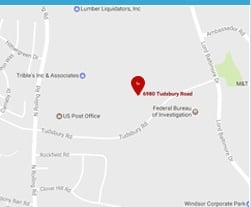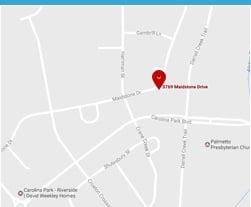 It may seem like ancient history, but there was a time not so-very long ago when printed circuit boards were drilled with a simple drill press. An operator would repeat the process of manually moving the panel to the exact X and Y coordinates before pulling a lever and drilling an individual hole. Fast-forward to today and consider the fact that our modern PCBs often require more than 10,000 drill hits in all different sizes. Just imagine how long it would take an operator to complete one measly project using the old methods of drilling! Fortunately, the process has been simplified significantly throughout the years. Let's take a look at how our methods have evolved, and what drilling a PCB entails today.
It may seem like ancient history, but there was a time not so-very long ago when printed circuit boards were drilled with a simple drill press. An operator would repeat the process of manually moving the panel to the exact X and Y coordinates before pulling a lever and drilling an individual hole. Fast-forward to today and consider the fact that our modern PCBs often require more than 10,000 drill hits in all different sizes. Just imagine how long it would take an operator to complete one measly project using the old methods of drilling! Fortunately, the process has been simplified significantly throughout the years. Let's take a look at how our methods have evolved, and what drilling a PCB entails today.
The Power of the CNC Drill
Modern technology demands faster, more streamlined processes while still maintaining a high level of precision and accuracy. Expecting one operator to drill thousands upon thousands of holes in a PCB is a recipe for disaster. That's why today we make use of automated CNC drilling machines that are controlled by a computer. Featuring one or many different sized drill heads, all of the required holes can be drilled into the board at a relatively rapid speed. As our equipment continues to advance, we can expect an even faster output so that increasingly complex boards can be produced in a short period of time.
Drilling Considerations
Just because high-tech drills and other machinery can be used to manufacture PCBs for electronics devices doesn't mean that no thought and planning must go into the operation. Skilled designers and engineers must consider several different items as they relate to drilling. Forethought is necessary for determining the appropriate size of the holes, the type of holes, and any final treatments. Aspect ratio (the difference between the thickness of the board and the size of the hole prior to plating) must be carefully considered before anything else can be done. This ratio establishes a guide for manufacturers, ensuring that the mechanical capacity of the drilling equipment isn't exceeded. Of course, in order to actually do anything with this information, designers and engineers need to have a working understanding of the largest and smallest holes than can feasibly be drilled into a board, based upon its thickness. 
Once aspect ratio has been well thought-over, it's time to consider the ways in which a via hole should actually be created and/or modified in such a way to meet project specifications. As a general rule of thumb, a via that's smaller than 0.006" will probably require the use of laser drilling. Laser technology can yield holes down to as little as 0.001" in size. In nearly all cases, these very small holes (microvias) will need to be plated, and they are typically used for very tight designs with numerous traces and connections.
Other options for vias include those which only go partially through a multi-layered board (blind vas). Buried vias, which are hidden within the internal layers of a board, may also be be required at times. Because the process requires that holes be drilled and played on layer stacks prior to all layers being laminated together, manufacturers may need to anticipate multiple drill, plate, and lamination processes in order for the final product to be completed. Finally, a manufacturer might need to drill partially through the board in order to control the depth of the drill so that it only goes to a set point.
In addition to everything else, designers and engineers must plan for whether the vias will need to be filled with either conductive or non-conductive materials. This can vary based upon the location of the via, or on conditions where high-heat or current requirements exist.
Sure, drilling PCBs has become much easier throughout the years, thanks to advancements in technology, but that doesn't mean that any less thought must go into generating the final product.





